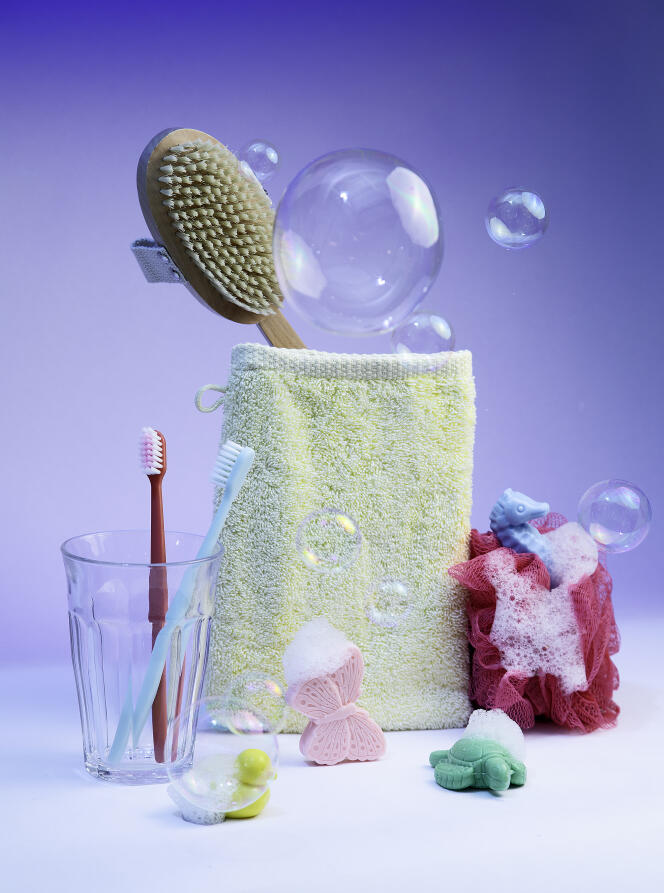


For some years now, our bathrooms have been affected by a strange phenomenon: Washcloths no longer hang next to the sinks. Most often, they lie mummified at the bottom of a closet where they are likely to be forgotten, except for those rare moments when they are unearthed and placed, damp, on a feverish child's forehead. "When I provide my guests with towels, the washcloth always comes back dry," said Anne, 51. "My mother gave me her collection, monogrammed with the family initials, but I don't know what to do with it," said 60-year-old Sylvie. When he visits his grandmother, 16-year-old Lucas finds the object "funny" but hasn't really embraced it. Nowadays, we're more likely to find a sponge for descaling tiled walls in our shower cubicles than a good old washcloth.
It has to be said that this little 15-by-20-centimeter cotton pouch, at some point passed over every buttock in the house, isn't very appealing. "The worst are the dark-colored varieties, to hide the grime," said Claire, 52, who admitted to having been addicted to washcloths as a child (four per shower session). "The towel doesn't have the same effect because you use it when you're clean." Not to mention the strong musty smell. "The washcloth catches dead skin cells and bacteria that rot with moisture, promoting bad odors," explained dermatologist Marie Jourdan. "When I used to wash this way, I found a little trick. When cleaning the washcloth, I let the water pass through the inside and not the outside to wash away all that little soup."
The disgust aroused by the bathroom item probably explains the lack of interest it has received from historians. While there are specialists knowledgeable about almost all cleanliness tools – such as the towel, the bidet and the shower – not a single one has taken an interest in the washcloth (even AI today has trouble generating images of washcloths). In Le Propre et le Sale. L'hygiène du corps depuis le Moyen Age (Concepts of Cleanliness: Changing Attitudes in France since the Middle Ages), which recounts the slow advancement of hygiene, historian Georges Vigarello makes no mention of them. The book makes it clear that the washcloth originated with a square of white linen with which the courtiers of the 17th century rubbed their faces, except that it was not intended to be wet. In the wake of the plague epidemic, water was blamed for all kinds of ills (including eyesight disruptions, catarrh, pallor and facial weakening), which explains why the washcloth's ancestor was used for dry scrubbing.
You have 62% of this article left to read. The rest is for subscribers only.
